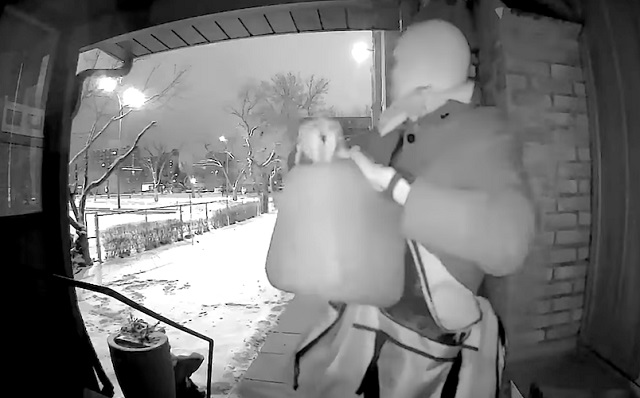Crime
Anatomy of a police shooting on the Whitefish Lake First Nation

This is a compelling read and will help average citizens understand what members of Alberta’s police forces encounter in the course of their duties.
From the Alberta Serious Incident Response Team
Police shooting of armed man was reasonable
On Sept. 6, 2017, ASIRT was directed to investigate the circumstances surrounding the death of a 26-year-old man on the Whitefish Lake First Nation following an encounter with an RCMP officer that day.
ASIRT’s investigation was comprehensive and thorough, conducted using current investigative protocols and best practices. In addition to interviewing all relevant civilian and police witnesses, ASIRT seized all available video and audio recordings from the officer’s police vehicle, as well as all relevant police dispatch records, including recordings of the 911 calls and radio communications. ASIRT directed a forensic examination of the incident scene and seized several physical exhibits. The RCMP officer provided a voluntary, written statement.
At the outset, ASIRT engaged an independent Indigenous community liaison to review the completed investigation. Upon completion of the investigation, the community liaison had full access to ASIRT’s investigative file and to the team assigned to the investigation. The liaison could ask questions of the investigative team and make recommendations where necessary. At the conclusion of this process, the community liaison confirmed that ASIRT’s investigation into this incident was thorough, complete, and objective.
On Sept. 6, 2017 at approximately 6:15 p.m., St. Paul RCMP received a 911 call from a woman indicating that a family member could be on the verge of hurting himself or others. She was concerned that he was suicidal, that he may be in medical distress, he appeared to be sweaty and clammy, and that he was not acting like himself. At the time of the call, she advised that the man was walking down the road carrying a baseball bat, while she and another family member followed behind in a vehicle, attempting to persuade him to enter their truck and return home.
Approximately six minutes later, a second person called 911 to report that two young women on a recreational vehicle had encountered a man walking on the road who had almost attacked them with a baseball bat. The caller advised that the man appeared to be under the influence of alcohol or drugs.
An RCMP officer, in uniform and operating a marked police vehicle, responded to these calls. The officer spoke with the family member who told him that she believed the man would require an ambulance as he was sweating badly, and she advised that it appeared as if he wanted to commit suicide. She advised that they had been able to get the man into their truck, and the officer asked them to keep him there while he was on the way.
The second person called police again and advised that she had observed the man walking with a bat, provided the man’s possible first name and indicated that it appeared the man was trying to hit his parents with the bat while they were standing on their driveway.
The officer travelled to the scene with his vehicle’s emergency equipment activated for the majority of the trip. The officer’s police vehicle was equipped with both forward- and rear-facing video cameras. This system was operational and captured both camera perspectives on video with accompanying audio and recorded time stamps. The rear-facing camera was intended to capture the rear seat of the police vehicle, but provided a limited view to the sides of the vehicle and towards the back. While the cameras did not capture full frames of the entire incident, they did capture an audio recording of the incident in its entirety, and portions of video in which the officer and/or the man can be seen at various points. As such, there are aspects of these events that are reliably established by the available audio and video recordings.
At 7:04 p.m., the officer pulled up to the 26-year-old man, who was walking on the road. The officer exited his vehicle and, in a calm voice, addressed the man by name and asked him, “What’s going on?” Neither the officer nor the man were on camera. Within three seconds, the officer can be heard repeatedly calling out, “Drop the knife,” as he stepped into camera view on the driver’s side of his vehicle and rapidly backed away from where the man would have been. The man appeared to follow and the officer fired his Conducted Energy Weapon (CEW), commonly referred to as a Taser, which caused the man to drop to one knee but failed to disarm him. Very quickly, the man was able to rise and continue towards the officer. The officer continued to direct the man to “Drop the knife,” sounding increasingly more frantic, and continued to try to create space by backing away around the back of the police truck bed.
The armed man can be seen to clearly and quickly pursue the officer towards the rear of the police vehicle. At the rear of the police vehicle truck bed, both the man and the officer are off-camera but can still be heard. Having directed the man to again drop the knife multiple times following the use of the CEW, the officer can clearly be heard to tell the man, “Drop the knife or you’re going to get shot.” Within four seconds of this command and warning, and following two additional directions to drop the knife, at 7:04:47 p.m., two gunshots are heard. The officer immediately calls “shots fired” repeatedly over the police radio. Although the man initially fell to the ground after being shot, and can be heard groaning, he maintained possession of the knife and the officer can be heard to yell “Drop the knife,” an additional six times following the shots, before again radioing “shots fired.”
Approximately 10 seconds after the man was shot, the forward-facing camera recorded the man’s family pulling out of a driveway in the distance and onto the road, then driving up to the scene. The officer is instructing the man to get down on the ground and drop the knife, and can be seen on the passenger side of the police vehicle backing away from where the man would have been. As the family members began to exit the vehicle, the man was briefly seen to be pursuing the officer at the edge of the camera view but appears to fall or falter.
Upon the arrival of the family, the officer can be heard to repeatedly yell “stay back.” The two family members walked in the direction of the ongoing incident. The subject officer continued to yell commands to “get down” and “drop the knife.” Within seconds, a second civilian vehicle arrived on scene. The occupants were not related to the man or his family.
At this point, the man slowly got to his feet and advanced in the direction of the officer, making a swinging or thrusting motion with the knife. Simultaneously, on video, a family member retreated to the area in front of the police vehicle, crying, as the officer continued to yell “drop the knife” and ordering the man to “get down on the ground.” As the man advanced again on the officer, this family member could be seen and heard screaming and pleading with the man to “get down” at least twice, and shortly thereafter, begging him to “stay down.” Ultimately, the man’s injuries caused him to collapse. The officer provided emergency first aid until additional officers and EMS arrived on scene.
The man was pronounced deceased at 8:09 p.m. An autopsy determined that the man had sustained two gunshot wounds: one to the right flank and one to the right upper thigh. The second gunshot wound transected organs and major blood vessels, causing rapid and significant blood loss that became fatal within minutes. The medical examiner confirmed that these injuries would not have been instantly fatal, and that it would have been possible for the man to walk or move for some time after the injuries. A toxicology report revealed the presence only of prescription and over-the-counter medication, with no alcohol present in the man’s body.
Interviews with family members confirmed that the man had been acting strangely all day, being very quiet. At approximately 2 p.m., the man reportedly made a comment “today is the day,” which a family member interpreted as the man telling her he was going “to go” on this day. The man also told a family member, “I gave my soul to the devil,” and this family member felt that something was not right with the man. She believed him to be suffering from worsening mental health issues. She advised that the man would stare into space and have conversations with people who were not around.
The man’s knife, recovered at the scene, was similar to a filet or boning knife with an approximately five-inch handle and seven-inch blade.
The officer, on duty, in full uniform and driving a fully marked RCMP vehicle, responded to several calls for assistance regarding the man’s actions. While the initial report was in relation to mental health concerns, subsequent calls were complaints of a weapons incident. In any case, the officer would have been lawfully entitled to take the man into custody under both the Mental Health Act and the Criminal Code. Considering these factors, the officer was at all times lawfully placed and acting in the course of his duty during his interactions with the man. The relevant consideration is thus the level of force used during the incident.
Under Sec. 25 of the Criminal Code, an officer is entitled to use as much force as necessary in the lawful execution of his or her duties. This can include force that is intended or likely to cause death or grievous bodily harm, when officers reasonably believe that such force is necessary to defend themselves or someone under their protection from death or grievous bodily harm. Further, under Sec. 34 of the Criminal Code, any person, including a police officer, is entitled to the use of reasonable force in defence of themselves or another. Factors in assessing the reasonableness of force used can include the use or threatened use of a weapon, the imminence of the threat, other options available, and the nature of the force or threat of force itself.
Having reviewed the evidence in this case, ASIRT executive director Susan D. Hughson, QC, has determined that there are no reasonable grounds nor even reasonable suspicion to believe that the officer committed any offences.
Looking at the evidence in its entirety, it is clear that the officer was responding to a call of an individual whose behaviour was erratic, who was possibly suicidal, who may have been involved in an incident where he swung a bat at two young women and who was also potentially armed. When the officer encountered the man, the evidence established that the man was armed with a knife and in a position to cause grievous bodily harm or death. The evidence also established that the man actively pursued the officer while armed with the knife. After the officer directed the man to “drop the knife” no less than 12 times, the officer used the CEW, which failed to disarm, disable or dissuade the man.
In these circumstances, the man both subjectively and objectively posed a risk of grievous bodily harm or death to the officer. The force used by the subject officer was justified and reasonable. The officer had diligently tried to avoid the use of lethal force as demonstrated by his repeated attempts to get the man to drop the knife, the unsuccessful use of the CEW as an intermediate weapon in an attempt to disarm and incapacitate the man, and his very clear warnings to drop the knife or the man would be shot. But as the man closed the distance, the officer was left with no other options.
The circumstances in this case speak to both the continuing nature of the threat itself, but also to the officer’s other efforts before resorting to a higher degree of force. Objectively, there can be no doubt that in these circumstances, while the officer clearly attempted to avoid it, resort to lethal force was both justified and reasonable.
It is impossible to determine what the man actually intended. The only indication of what he might have been thinking is what might be inferred from his conduct. He was not behaving rationally, was clearly actively and aggressively advancing on the officer with the knife and was not deterred by the CEW, the repeated commands and warning — or, in fact, even being shot. He continued his pursuit of the officer until he could physically no longer do so.
A person in the midst of a mental health crisis is as capable as any other person of causing grievous bodily harm or death to another person. That person can be even more dangerous given one cannot expect them to respond rationally to the situation or an officer’s presence. The evidence established that the officer used every tool available to him to try and avoid having to use lethal force, until the point that he had no other safe option to protect himself but lethal force. On that basis, the level of force employed, while tragic, was lawful.
Having found that there are no reasonable grounds to believe that the officer committed any offences, the officer will not be charged.
This finding does not diminish the tragedy of the loss for the family of this young man, who was clearly in the midst of some form of health crisis, nor how devastating the incident was for the family members who were present for portions of this event. ASIRT extends its sincere condolences to the family and friends of the man.
Crime
Canadian receives one-year jail sentence, lifetime firearms ban for setting church on fire

From LifeSiteNews
Jordan Willet was convicted of starting a blaze in February at Blessed Sacrament Parish in Regina, Saskatchewan.
A man who was charged with arson after trying to burn down a historic Catholic church earlier this year was handed only a one-year jail sentence for his crime but has also been banned from being able to possess firearms for life.
On April 9, a court sentenced Jordan Willet, 31, to 278 days in jail for intentionally or recklessly causing damage by fire or explosion to property and for not complying with a probation order. In February, LifeSiteNews reported that Willet had been arrested and charged with starting a fire at Blessed Sacrament Parish in Regina, Saskatchewan, on February 9.
He pleaded guilty to both charges and also received an 18-month probation sentence along with a lifetime firearm prohibition.
Over the weekend, Fr. James Hentges, the parish pastor, said he was “relieved he is in custody and is not a threat.”
The parish had posted footage of the February 9 attack on social media and put out a plea for anyone who had information on the event to report it to police.
The video footage of the attack, taken from a doorbell camera, shows Willet, in a mask, pouring fuel on the church before setting it on fire.
Fire investigators determined that the blaze was caused by a direct act of arson.
Since the spring of 2021, more than 100 churches, most of them Catholic, have been burned or vandalized across Canada. The attacks on the churches came shortly after the unconfirmed discovery of “unmarked graves” at now-closed residential schools once run by the Church in parts of the country.
In 2021 and 2022, the mainstream media ran with inflammatory and dubious claims that hundreds of children were buried and disregarded by Catholic priests and nuns who ran some of the schools.
Despite the church burnings, the federal government under Prime Minister Justin Trudeau has done nothing substantial to bring those responsible to justice or to stem the root cause of the burnings.
The claims, which were promoted by Trudeau among others, lack any physical evidence and were based solely on soil disturbances found via ground-penetrating radar.
In fact, in August 2023, one such site underwent a four-week excavation and yielded no remains.
Despite the lack of evidence, the Canadian Broadcasting Corporation (CBC) and others have continued to push the narrative, even running a report recently that appeared to justify the dozens of attacks against Catholic churches.
In January, Conservative Party leader Pierre Poilievre not only condemned the rash of church burnings in Canada but called out Trudeau for being silent on the matter.
Addictions
Liberal MP blasts Trudeau-backed ‘safe supply’ drug programs, linking them to ‘chaos’ in cities

First responders in Ottawa dealing with a crisis Fridayman 0102 / YouTube
From LifeSiteNews
‘There is certainly the perception by a lot of Canadians that a lot of downtown cores are basically out of control,’ Liberal MP Dr. Marcus Powlowski said, before pointing specifically to ‘safe supply’ drugs and injection sites.
A Liberal MP has seemingly taken issue with “safe supply” drug policies for increasing public disorder in Canada, policies his own party, under the leadership of Prime Minister Justin Trudeau, has endorsed.
During an April 15 health committee meeting in the House of Commons, Liberal MP Dr. Marcus Powlowski, while pressing the Royal Canadian Mounted Police (RCMP), stated that “safe supply” drug policies have caused Canadians to feel unsafe in downtown Ottawa and in other major cities across the country.
“There is certainly the perception by a lot of Canadians that a lot of downtown cores are basically out of control,” Powlowski said.
“Certainly there is also the perception that around places like safe supply, safe injection sites, that things are worse, that there are people openly stoned in the street,” he continued.
“People are getting cardio-pulmonary resuscitation performed on them in the street. There are needles around on the street. There is excrement on the street,” Powlowski added.
“Safe supply“ is the term used to refer to government-prescribed drugs that are given to addicts under the assumption that a more controlled batch of narcotics reduces the risk of overdose – critics of the policy argue that giving addicts drugs only enables their behavior, puts the public at risk, disincentivizes recovery from addiction and has not reduced, and sometimes even increased, overdose deaths where implemented.
Powlowski, who has worked as an emergency room physician, also stated that violence from drug users has become a problem in Ottawa, especially in areas near so-called “safe supply” drug sites which operate within blocks of Parliament Hill.
“A few months ago I was downtown in a bar here in Ottawa, not that I do that very often, but a couple of colleagues I met up with, one was assaulted as he was going to the bar, another one was threatened,” said Powlowski.
“Within a month of that I was returning down Wellington Street from downtown, the Rideau Centre, and my son who is 15 was coming after me,” he continued. “It was nighttime and there was someone out in the middle of the street, yelling and screaming, accosting cars.”
Liberal MP Dr. Brendan Hanley, the Yukon’s former chief medical officer, testified in support of Powlowski, saying, “My colleague Dr. Powlowski described what it’s like to walk around downtown Ottawa here, and certainly when I walk home every day, I encounter similar circumstances.”
“Do you agree this is a problem?” Powlowski pressed RCMP deputy commissioner Dwayne McDonald. “Do you agree for a lot of Canadians who are not involved with drugs, that they are increasingly unhappy with society in downtown cores which are this way? Do you want to do more about this, and if you do want to do more about this, what do you need?”
McDonald acknowledged the issue but failed to offer a solution, responding, “One of the success factors required for decriminalization is public support.”
“I think when you are faced with situations where, as we have experienced in our communities and we hear from our communities, where public consumption in some places may lead to other members of the public feeling at risk or threatened or vulnerable to street level crime, it does present a challenge,” he continued.
Deaths from drug overdoses in Canada have gone through the roof in recent years, particularly in British Columbia after Trudeau’s federal government effectively decriminalized hard drugs in the province.
Under the policy, which launched in early 2023, the federal government began allowing people within the province to possess up to 2.5 grams of hard drugs without criminal penalty, but selling drugs remained a crime.
The policy has been widely criticized, especially after it was found that the province broke three different drug-related overdose records in the first month the new law was in effect.
The effects of decriminalizing hard drugs in various parts of Canada has been exposed in Aaron Gunn’s recent documentary, Canada is Dying, and in U.K. Telegraph journalist Steven Edginton’s mini-documentary, Canada’s Woke Nightmare: A Warning to the West.
Gunn says he documents the “general societal chaos and explosion of drug use in every major Canadian city.”
“Overdose deaths are up 1,000 percent in the last 10 years,” he said in his film, adding that “[e]very day in Vancouver four people are randomly attacked.”
-

 Economy2 days ago
Economy2 days agoExtreme Weather and Climate Change
-

 International1 day ago
International1 day agoTelegram founder tells Tucker Carlson that US intel agents tried to spy on user messages
-

 Alberta2 days ago
Alberta2 days agoDanielle Smith warns arsonists who start wildfires in Alberta that they will be held accountable
-

 National2 days ago
National2 days agoCanada’s Governor General slammed for hosting partisan event promoting Trudeau’s ‘hate speech’ bill
-

 Business1 day ago
Business1 day agoNew capital gains hike won’t work as claimed but will harm the economy
-

 Fraser Institute1 day ago
Fraser Institute1 day agoPowerful players count on corruption of ideal carbon tax
-

 Business1 day ago
Business1 day agoCanada’s economy has stagnated despite Ottawa’s spin
-

 Opinion1 day ago
Opinion1 day agoTransgender ideology has enabled people to ‘identify’ as amputees








